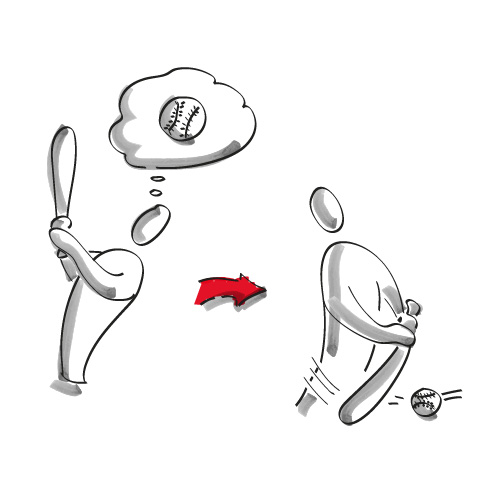Are we aware of the impact of our actions, our decisions, our questions, our attitude? I think not. All too often our actions are dictated by our emotions: we fail to step back and take time to understand ourselves and the reactions we trigger in others. We speak here of emotional intelligence. (See my article: Leadership and emotional intelligence: A key to becoming an inspirational leader)
I would like to share with you a simple approach that I always use at the start of a talk or activity. My aim is to stimulate four increasingly important aspects of leadership:
- self-awareness
- awareness of the other person, management of the relationship
- agility
- client focus
Definition:
Intention (from the Latin “intentio”: tensing, strain; application of thought; effort or exertion towards a goal) is an act of will whereby an individual or group of individuals establishes the goal of an activity or works up the motivation that leads to action.
In other words, it is an attitude of mind, an inner movement whereby a person proposes – more or less consciously and with more or less determination – to achieve, or try to achieve, a given goal.
How do you make your audience aware that intention is an important driver of action?
This is my approach: inviting questions!
At the start of an intervention (a training session, conference or workshop), the first stage is generally the trainer’s presentation, i.e. introducing yourself. How do you go about it? In most cases, the trainer speaks about him- or herself. Sometimes, to make a point, he/she takes an object of personal interest and explains his/her connection with it.
A very common approach, yet nothing could be more self-centred and actually quite off-putting. In this introductory phase, we tend to neglect a hidden resource: our audience.
My solution: let the members of your audience ask you questions. What do they want to know about you? Give them a few moments to think, and also ask them to consider the intention behind the question they want to ask.
Then get them to ask their questions and, at the same time, state their intention. As you will discover, this teaching technique will bring to light a wealth of resources.
Self-awareness:
First of all, it will make the person asking the question aware of their reason for doing so. Often our attitude when asking a question and/our the question we ask is determined by a hidden intention. It is important that we be aware of this.
For example, one of the participants in your training session may have had a lot of experience in the field you are covering and their question will be something of a challenge to your authority in that field. The answer you give will either build trust or confirm their lack of trust in you.
Awareness of the other person, management of the relationship:
Secondly, the participant’s question and stated intention will provide you with information about them. This can help you to manage your relationship with the person concerned and understand the tensions that might arise within the group.
The procedure will also get all your participants, even the most timid, thinking and speaking.
Agility:
Thirdly, this approach will force you to remain agile, and discover new facets of your own personality. Not always easy! Sometimes you will be thrown off balance (it has happened to me), but it doesn’t matter: it makes you appear more human and creates a more authentic relationship with the audience. With experience, you will be able to respond adequately to all the questions fired at you. Sometimes, you may be able to keep the question for later, if one of the points in your presentation provides a clear answer to what you are being asked.
Client focus:
Finally, this approach is a perfect example of how to be client-focused. The important thing is what your client, the person you are addressing, wants to know, not what you think is important. How often, when a trainer or conference speaker introduces him- or herself, do you think: “Stop, you’ve said enough already, what you are saying is of no interest to me…”
This is unfortunate, a missed opportunity to follow the sequence of steps I have outlined, which could be a real asset in the training context.
Even now, after many years, I am still fascinated by the questions people ask. They open up new horizons for me and make the job I do so fascinating.
But make sure you do not misuse the technique.
Maybe some of you, reading this, will think that this approach would work with a small group of people, but not with a larger gathering.
In fact, with larger groups, I use two variants. With groups of medium size, say between 16 and 40 people, I get smaller groups of people to work together and think up a question or two, which keeps the number of questions manageable. With really large groups (conferences with more than 40 people attending), I agree with the organizer that he or she will ask some questions at the beginning. Of course, I don’t want to know in advance what the questions will be. The organizer, too, is required to state the intention behind each question he or she asks.
Questioning of this kind is an exciting tool, and one that is absolutely packed with possibilities. You just need to use it intelligently.
I hope you will receive plenty of stimulating questions.

